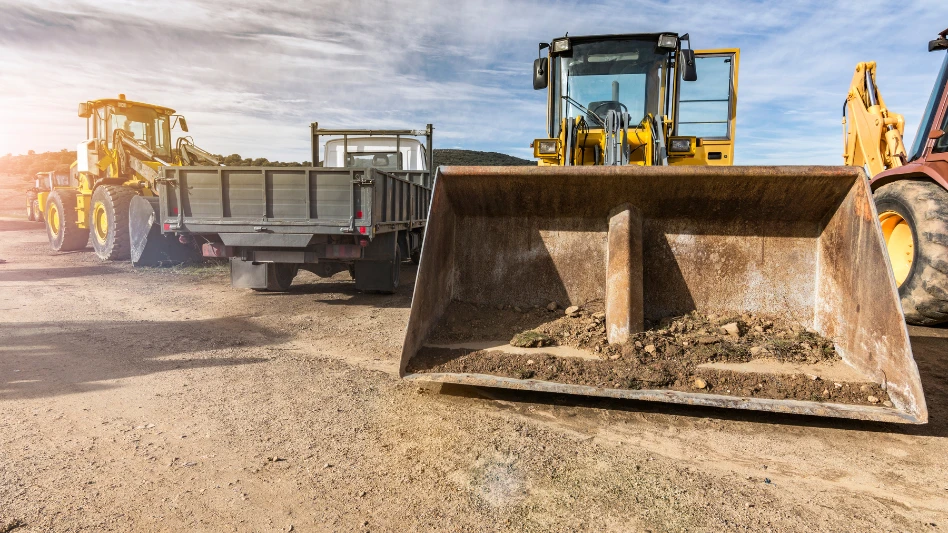 “Fertigation.” While the word may sound Greek to some, this method of strategically applying fertilizer via an irrigation system is far from novel. The agricultural and nursery industries have been reaping the benefits for years. And although it can offer many advantages, including significant water savings and reduction in both contractor labor and plant mortality rates, customers are slow to embrace this more environmentally friendly option.
“Fertigation.” While the word may sound Greek to some, this method of strategically applying fertilizer via an irrigation system is far from novel. The agricultural and nursery industries have been reaping the benefits for years. And although it can offer many advantages, including significant water savings and reduction in both contractor labor and plant mortality rates, customers are slow to embrace this more environmentally friendly option.
Gary Moore, owner/operator of State of the Art Irrigation & Landscape Contractors in Sarasota, Fla., is an avid fertigation proponent. But he admits business is frustratingly slow.
Since Moore became a licensed fertilizer applicator last year, he has only been installing systems for his residential customers. Commercial properties have been delaying this type of financial commitment during the recession, he says.
|
PRICING FERTIGATION SERVICES Industry members stress that customer education is key to a better understanding of – and an increase in purchasing – fertigation systems. This includes showing clients vibrant, colorful, thriving landscapes that presently benefit from these types of systems. |
And selling fertigation to homeowners has been challenging, he adds. Many back away from the up-front $450 installation cost he charges, as they are already paying $600 a year for granular fertilizer and don’t understand the benefit, Moore explains.
“The water savings argument doesn’t work in this situation, since most landscapes generally run on well water,” he says. However, for customers using city water, he has seen savings of 66 percent when they use fertigation instead of granular fertilizers.
“People don’t like change. What really sells it is when I suggest they visit some of the properties with fertigation systems to view how thick the turfs are and the beautiful annuals,” Moore says.
Ken Donnelly co-owns Accurate Underground Systems with son Kevin in Dunnellon, Fla. Donnelly branched out into fertigation in 2007 when he saw it as a natural addition to his irrigation services. His commercial clients – 15 percent of his customers – have no interest in fertigation whatsoever, he says. And out of his residential customers, less than 10 percent have fertigation systems.
“The idea is absolutely new to most people,” he says. “The interest is there, but they don’t want to be the first ones in the neighborhood to try it, and they’re not looking to spend the money in this economy.”
Seeing is Believing
Despite its slow acceptance, there are contractors who recognize its potential profitability.
For nearly two years Jamel Taylor, owner of Taylormade Landscapes in Las Vegas, has been aggressively marketing the advantages of fertigation systems. And it seems to be working. “Out here in the summer heat it’s an easy sell when your grass isn’t green but your neighbor’s is because of a fertigation system,” he adds.
His company’s revenue in the fertigation sector is $25,000 annually, with five to 10 percent yearly growth. He predicts it will only increase once the economy bounces back.
Taylor’s region is ideal for these systems because of the dry climate and the fact that everyone in the area already has an irrigation system in place. The fertigation side of business is doing well, he says, with his company installing on average one new system a week.
One of the most notable attributes is fertigation’s ability to provide nutrients to plants through micro-dosing – the process of continually delivering precise amounts of nutrients exactly where they’re needed. This eliminates the “feast or famine” effect that comes with granular use.
It also enables contractors to customize the process necessary for a particular soil type, note industry members.
This is paramount to the success of landscapes with challenging soil, says Drew Calvert, director of grounds management at Las Vegas-based D&K Landscape. The company recently added fertigation to its service mix, and it represents less than 10 percent of overall business, which is 95 percent commercial.
And because the fertigation process applies nutrients in soluble form, it’s significantly better for the environment in that it eliminates run off. Even in tropical climates such as Florida, it’s necessary to fertilize because the soil is sandy and isn’t conducive to chemical retention. “The normal root uptake is about 30 percent with traditional fertilizing methods, but it’s about 60 percent using fertigation,” Donnelly says.
Because most systems are installed underground, another advantage is that there are very little maintenance issues. Once installed, contractors return as needed to refill the tank for a fee.
The author is a freelance writer based in Lakewood, Ohio.
| ADDING FERTIGATION TO YOUR SERVICE MIX |
| Before venturing into the fertigation arena, industry members advise considering the following:
Do Your Homework Licensing Requirements and Restrictions Costs Advertise Your New Service to Clients Beware of Fertigation System Challenges |

Explore the November 2009 Issue
Check out more from this issue and find your next story to read.
Latest from Lawn & Landscape
- Analysis of an entrepreneur
- Terra Nova's Sedum Conga Line variety wins Best of 2024 Perennial award
- Different ways to distribute
- Case's 580EV electric backhoe loader wins Good Design Award
- Davey Tree promotes Dan Herms to VP, GM of Davey Institute
- Caterpillar's Cheryl H. Johnson set for April retirement
- Registration open for sixth annual Lawn & Landscape Technology Conference
- 12 interview questions to help you hire winners





